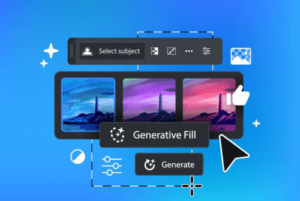Introducing LONGNET, a revolutionary language model that supports one billion tokens, while maintaining system performance and quality. LONGNET is revolutionizing long sequences, along with linear computation for optimization. This research was first published at Microsoft Research, with the help of different researchers such as Jiayu Ding, Shuming Ma, Li Dong, Xingxing Zhang, Shaohan Huang, Wenhui Wang, and Furu Wei. This mechanism is allowing the system to gain optimization over a long sequence of text. Research has found a new way to handle billions of tokens. This approach can model extremely long pieces of tokens.

Embrace The Legacy Of Past Research
Before the use of LONGNET researchers faced many limitations in processing long sequences. RNN-style model was used, which supports long pieces of sequence, but its sequential nature effect parallelization training. Other than that, State model was also used, offering some improvement to the previous approach, by working as CNN at the time of training and transforming into RNN at test time. After viewing their performance, it was concluded that their regular sequence was not strong for transformers which had superior results. Transformers, on the other hand, suffers from the problem of computation complexity, and consequently requires multiple GPUs and longer training time to train in most cases.
To overcome previous limitations new model was proposed named LONGNET. LONGNET expands the model’s ability to hold different dependencies. Effectively recognizing far-apart information without affecting computation efficiency. With the help of linear computation complexity, it can hold tokens over 1 billion, efficiently. Allowing parallel training over multiple GPU devices, while improving scalability, and serving as a distributed trainer. It provides strong performance over large and small sets of tokens.

Marvels Of Future Work
In future scaling sequence of tokens will be the focus point. Pushing the limits, to explore tokens longer than 1 billion, addressing computation and memory constraints. In short handle large-scale text. It can easily extend to different levels of domains and tasks. Researchers will continue to seek more ways to enhance language performance.
LONGNET will do multi-modeling tasks, which means models can further explore, and process information from multiple models including text, audio, video, and images. Context-rich data will be handled by the model. Enhancing prompting techniques to find how further the context window can go, gaining effectiveness. To gain more accurate response and contextual aware response.

It is a strong base model that performs fine-tuning and shift learning tasks. It will be analyzed for pretraining on the large-scale dataset and fine-tuning downstream tasks. To grab large dependencies to improve performance. The future search will explore techniques to improve effectiveness across multiple scenarios and make it applicable to use in real-world scenarios.
Availability
You can check the whole research paper at arxiv.org its code is available on GitHub and view another source of LONGNET. Not only this, LONGNET dataset is also open to all people at paperswithcode.com researchers have also attached similar datasets for better understanding. You can check their web page to access all resources. To explore pretraining and multimodal you can also check the thegenerality.com. All these sources are open and available for access. You can also view different models and their progress on above pages.

The implemented code is available on GitHub, as open source.
Installation
To access the whole system, you can install it on your systems. Two methods can be used for installation one is Git clone and the other is Pip install (you need to install python).
In the Git clone method, the user needs to clone the LONGNET repo from GitHub. Navigate the cloned directory and install the dependencies. For a clear understanding check the page.
In Pip install method install LONGNET directly from PYPL using pip. For clear understanding check the page.
After the installation from any of the method. check its usage listed on the page. On the same page, they have listed the inputs/Output of the system.
Potential Application
It can be implemented to fix real-time problems such as in the:
- Text generation
- Machine translation
- Social media monitoring
- Systematic analysis
- Document analysis
- Multimodal Q/A system
- clinical decision support systems
- Genomic data modeling
- Financial sentiment analysis
Distributed training of LONGNET is done on two GPU devices. It parallelized the training by partitioning the dimension in sequence.

Summarize
The researcher has introduced a new approach known as the LONGNET. LONGNET transformer deals with a large number of tokens without affecting their performance. Gain dilated attention, to expand the distance between tokens. It contains many advantages like integration with the seamless existing system, transformer-based optimization, and complex linear computation. It can serve as a distributed training for billions of sequences.

Results
After the implementation of different models, it is observed LONGNET provides outstanding performance, in language modeling. by doing a few computation efficiency and effectiveness is achieved.

Conclusion
This research was promising for a long sequence of tokens in the language model. It has overcome the limitation of previous models, leverage the efficiency and effectiveness of the system, and makes it unique from others. LONGNET is a surpassing long/short sequence model, showcasing its potential in various applications. Addressing problems in the field of language modeling. It has a bright future, this approach will be utilized for a long period.
Similar Posts
-
Discover the Best AI Image Generator Tools in 2024

-
Explore the 6 top Image-to-Video AI Tools to Add Amazing Artistic Touch

-
Best AI Music Generator Tools of 2024 Easily Accessible to Every Musician

-
Explore the Best Image2Image AI Models that Revamp Your Creativity

-
Explore the 10 Best Text to Image AI Tools that Generate Incredible Graphics

-
Google Health AI Tool: Empowering Health Management

